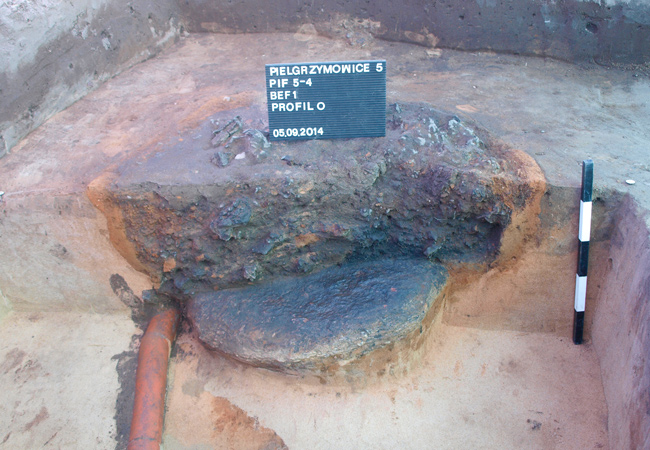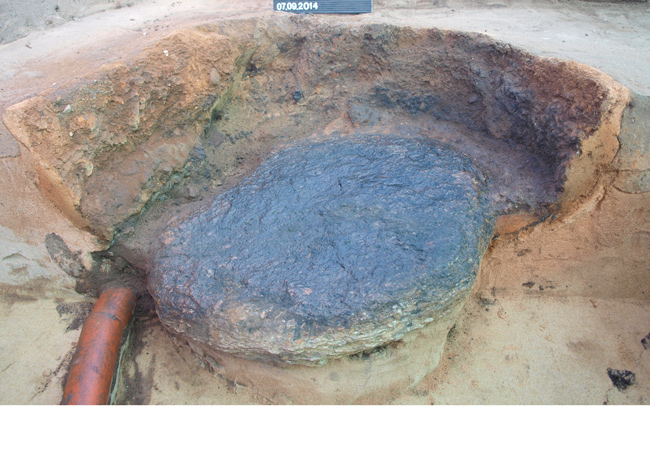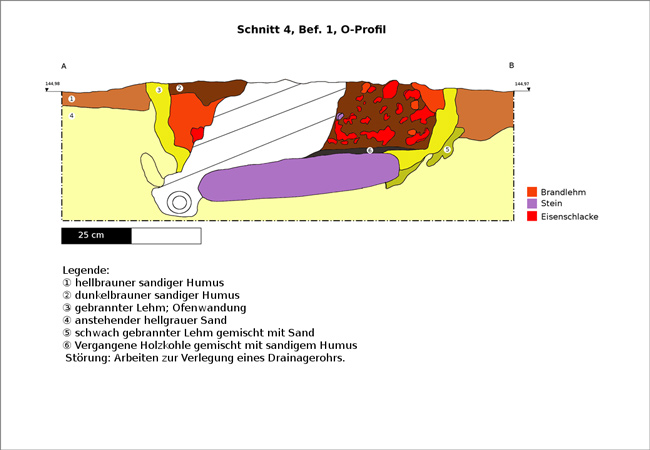The spread of technical innovations such as iron smelting required basic natural resources (iron ore) and manual skills along with social acceptability and necessity. The dissertation investigated the beginnings of iron smelting in the area of the Przeworsk culture (Poland). It is assumed that the earliest stages of local and regional iron production coincide with the emergence of the Przeworsk culture within the 2nd century BC.
Research
In a first theoretical section iron smelting as an innovation and its cultural spread was conceptualized. Technical and socio-economic aspects are discussed and the creative and individual shaping of the technical system (furnace) is highlighted. The spread of the innovation of iron smelting appears to have been a recursive learning process that involved a relative potential for change resulting from technical solutions and adaptations. The role of iron on the object level is shown by the comparative analysis of grave goods especially for early and late Iron Age Silesia, further Polish regions of the younger pre-Roman Iron Age Przeworsk culture, as well as for the concurrent Oksywie culture in northern Poland.
For the key question of iron production in the pre-Roman Iron Age, the extensive literature on individual prehistoric smelting sites was researched, and site manuscripts and excavation files were evaluated. An archaeological survey and a number of test pits at one iron slag site in Silesia were carried out (see figures 1-4).
Overall, there is hardly any evidence of iron smelting for the pre-Roman Iron Age in Poland. Therefore, according to this research, the question of iron objects in pre-Roman Przeworsk culture seems to be one of the social relations, the communication and exchange networks both on intracultural and in particular on the intercultural level (above all with the La Tène culture) and is not the result of a pronounced local or regional iron production. The results from the Przeworsk culture in Poland are compared with the La Tène culture and the groups associated with it in East Central Europe (Czech Republic, Slovakia, Austria, Hungary, Romania and Slovenia) in order to show similarities and differences.
Finally, the question of the technology transfer to the area of the Przeworsk culture was examined and an alternative explanation to the communis opinio was formulated, which derives the introduction of iron smelting technique from the La Tène culture. The thesis links the technology transfer with Elbgermanic groups during the transition to the Roman imperial period at the earliest. This development seems to be a supraregional phenomenon of the transformation phase from the La Tène period to the Roman imperial period in Central Europe.
This Ph.D. thesis has been written within the program “Landscape Archaeology and Architecture” (LAA) of the Berlin Graduate School of Ancient Studies (BerGSAS) and has been successfully completed in 2016.
Related Publication
Enrico Lehnhardt, Die Anfänge der Eisenverhüttung im Bereich der Przeworsk-Kultur, Berlin: Edition Topoi, 2019




